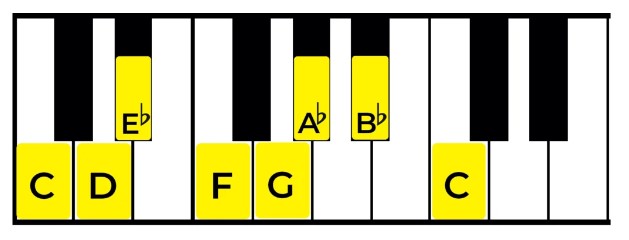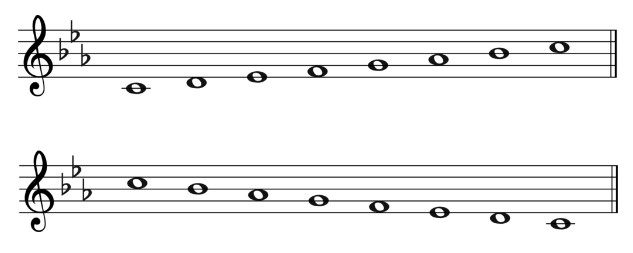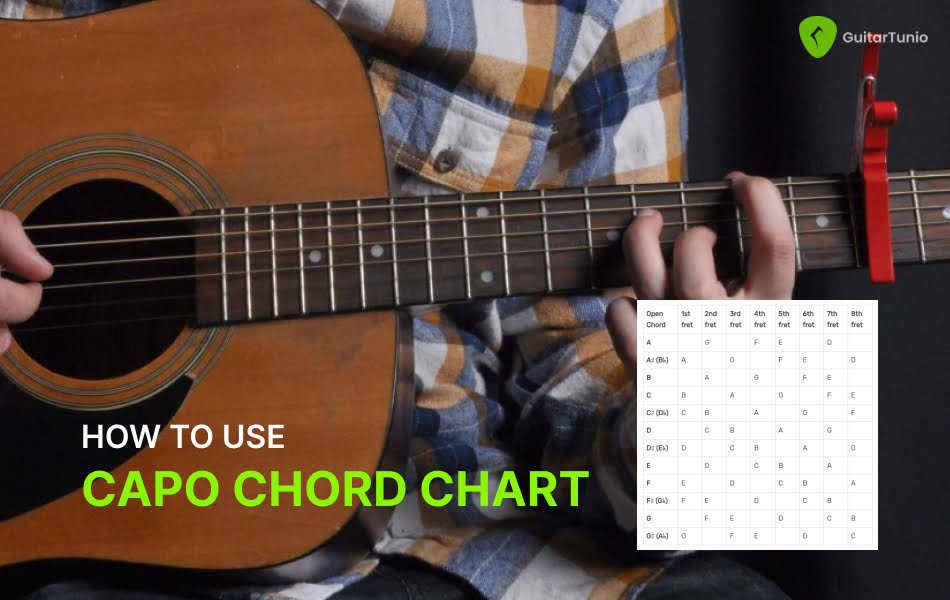The C Natural Minor Scale Theory
The C Minor scale consists of seven notes, namely C D Eb F G Ab Bb C. It is typically notated as commencing and concluding on C, and it can be repeated at higher or lower octaves. It belongs to a key, which is C Minor in this case, and is classified as a diatonic scale. There are three variations of the minor scale: the natural minor, harmonic minor, and melodic minor. For this post, we will focus on the C Natural Minor Scale, but you can explore the C Harmonic Minor and C Melodic Minor in our other articles.
HOW TO CREATE THE C NATURAL MINOR SCALE
Every Natural Minor scale adheres to a specific sequence of tones and semitones (whole steps and half steps).
The sequence is as follows: Tone, Semitone, Tone, Tone, Semitone, Tone, Tone.
To form a C natural minor scale starting on C, we follow a specific sequence of intervals. We begin by moving up a whole step to D. Then, we move up a half step to Eb. From Eb, we move up a whole step to F, and then another whole step to G. Moving up a half step from G brings us to Ab. From Ab, we take a whole step to Bb. Finally, moving up one more whole step returns us to C, but one octave higher than the initial note.
Regardless of the starting note, you will always arrive at the minor scale for that particular note.

C NATURAL MINOR SCALE ON THE PIANO
As you can see, if we were to play this scale on the piano diagram we use three black keys for the three flats in this key

To play this scale on the piano use the fingers written below.

C NATURAL MINOR SCALE ON THE GUITAR
You can use the tab below to play the C Natural Minor scale on the guitar

DEGREES OF THE SCALE: C MINOR
- Tonic: C
- Supertonic: D
- Mediant: Eb
- Subdominant: F
- Dominant: G
- Submediant: Ab
- Subtonic: Bb
- Octave: C
Eb major is the relative major key of C minor. When referring to a natural minor scale or key, it is composed of the same notes as its relative major. The Eb major scale consists of the following notes: E♭, F, G, A♭, B♭, C, and D. In the case of C minor, it uses the same notes as Eb major, except that the sixth note of the major scale becomes the root note of its relative minor.
KEY SIGNATURE FOR C MINOR
Instead of notating the flat signs on each note, we can utilize the key signature. C Minor is the relative minor of Eb Major, as C is the sixth note in Eb Major. As a result, they both share a key signature with 3 flats: Bb, Eb, and Ab.
Here is C minor written out with the key signature.

C MINOR SCALE IN DIFFERENT CLEFS
Treble Clef
Below is the C Natural Minor Scale written out in the treble clef, both ascending and descending.

Bass Clef
Below is the C Natural Minor Scale written out in the bass clef, both ascending and descending.

Alto Clef
Below is the C Natural Minor Scale written out in the alto clef, both ascending and descending.

Tenor Clef
Below is the C Natural Minor Scale written out in the tenor clef, both ascending and descending.

Let’s now take a look at the chords in the key of C minor.
- Chord i: C minor. Its notes are C – Eb – G.
- Chord ii: D diminished. Its notes are D – F – Ab.
- Chord III: Eb major. Its notes are Eb – G – Bb.
- Chord iv: F minor. Its notes are F – Ab – C.
- Chord v: G minor. Its notes are G – Bb – D.
- Chord VI: Ab major. Its notes are Ab – C – Eb.
- Chord VII: Bb major. Its notes are Bb – D – F.
If you’re interested in learning more about music scales, chords, and musical theory, visit our Guitar tunio today








